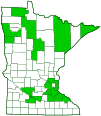American sand wasp
(Bembix americana)
Conservation • Description • Habitat • Ecology • Distribution • Taxonomy
|
|
||||||||||||||
Description |
American sand wasp a widespread, medium-sized, sand wasp. There are seven subspecies of American sand wasp worldwide, two in North America north of Mexico. Of these, only the eastern subspecies, Bembix americana spinolae, occurs in Minnesota. It occurs in the United States and southern Canada east of the Rocky Mountains, and in Mexico. Adults are ⅝″ to ¾″ (16 to 20 mm) long, medium-size for a wasp, large for a sand wasp. They are mostly black with extensive white markings on the abdomen. The face and the top of the head (vertex) are covered with short, white, erect hairs. The upper lip (labrum) is long and triangular. There are two large compound eyes on the sides of the head and three small simple eyes (ocelli) in a triangle at the top of the head. The compound eyes are green. The antennae rise from very low on the face. The thorax is entirely black with no white markings, and is covered with short, white hairs. The exoskeletal plate covering the first segment of the thorax (pronotum) is short and collar-like. There is a rounded lobe on each side of the pronotum that does not reach the small plate covering the wing base (tegula). The abdomen is black with 5 pairs of spots. Each pair of spots forms a band interrupted in the middle. The spots in the first band are widely separated. The remaining pairs are closely separated or sometimes joined in the middle. The wings are clear and have pale brownish veins. The forewing has 3 submarginal cells and a short discal cell. The cross vein between the first two submarginal veins is distinctly crooked. The legs are mostly yellow. |
Size |
Total length: ⅝″ to ¾″ (16 to 20 mm) |
Similar Species |
Habitat |
Sandy areas |
Ecology |
Season |
|
Behavior |
It may appear aggressive by hovering close to a human. When this happens the wasp is trying to capture flies attracted to that person. |
Life Cycle |
American sand wasp is a solitary nester. The female digs a nest in sandy ground and provisions it with flies and other small insects. The nest is not always completely provisioned when an egg is deposited. In these instances, the young are fed as they grow. |
Larva Food |
Paralyzed flies and other insects |
Adult Food |
Flower nectar |
Distribution |
||
|
Sources |
|
| 6/15/2025 | ||
Occurrence |
||
Fairly common |
||
Taxonomy |
|
Order |
Hymenoptera (Ants, Bees, Wasps, and Sawflies) |
Suborder |
Apocrita (Narrow-waisted Wasps, Ants, and Bees) |
Infraorder |
Aculeata (Ants, Bees, and Stinging Wasps) |
Superfamily |
Apoidea (Bees and Apoid Wasps) |
Family |
Crabronidae (Square-headed Wasps, Sand Wasps, and Allies) |
Subfamily |
Bembicinae |
Tribe |
Bembicini (sand wasps) |
Subtribe |
Bembicina |
Genus |
Bembix |
Subordinate Taxa |
|
American sand wasp (Bembix americana americana) American sand wasp (Bembix americana antilleana) American sand wasp (Bembix americana comata) American sand wasp (Bembix americana dugi) American sand wasp (Bembix americana hamata) American sand wasp (Bembix americana nicolai) American sand wasp (Bembix americana spinolae) |
|
Synonyms |
|
Bembix connexa Bembix primaaestate Bembix similans Bembex spinolae Epibembex spinolae Epibembex connexa Epibembex primaaestate Epibembex similans |
|
Common Names |
|
American sand wasp eastern sand wasp |
|
Glossary
Flagellomere
A segment of the whip-like third section of an insect antenna (flagellum).
Labrum
The upper part of the mouth, sometimes considered the lower part of the face, corresponding to the upper lip, on an insect or crustacean.
Ocellus
Simple eye; an eye with a single lens. Plural: ocelli.
Pronotum
The exoskeletal plate on the upper side of the first segment of the thorax of an insect.
Tegula
A small, hardened, plate, scale, or flap-like structure that overlaps the base of the forewing of insects in the orders Lepidoptera, Hymenoptera, Diptera, and Homoptera. Plural: tegulae.
Visitor Photos |
||
Share your photo of this insect. |
||
This button not working for you? |
||
Alfredo Colon |
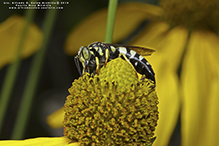 |
Dan W. Andree |
||
American Sand Wasp.... |
||
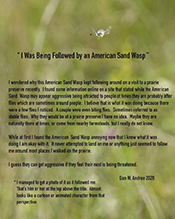 |
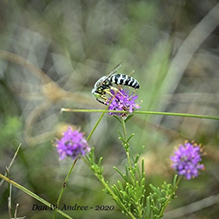 |
|
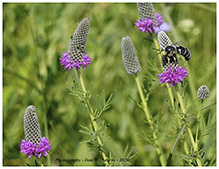 |
||
Green eyed bee like creature.... |
||
MinnesotaSeasons.com Photos |
||
|
||
|

Slideshows |
|

Visitor Videos |
||
Share your video of this insect. |
||
This button not working for you? |
||
|
Other Videos |
||
Bembix americana - Western Sand Wasp |
About
Jun 24, 2020 This video of a female Bembix americana or Western Sand Wasp was filmed at American Camp (San Juan Island National Historical Park). She is provisioning the burrow of one of her offspring. Bembix americana are not harmful wasps or dangerous to humans or pets. They are important in the ecosystem as they prey on many pest insects. |
Bembix americana (?, kicking and dragging (2/2) - 2020/06/24 |
About
Jun 24, 2020 A longer video than what I usually post, so if TL;DW applies : two bees get territorial, then later one will kick sand and move rocks. / Un vidéo plus long que ce que je partage habituellement, donc si c'est trop : deux abeilles adoptent un comportement territorial, puis une va creuser dans le sable et déplacer des roches. Inaturalist : https://inaturalist.ca/observations/50804404 License Creative Commons Attribution license (reuse allowed) |
SAND WASP furiously digging burrow.. Bembix americana |
About
Feb 13, 2016 Bembix americana SAND WASP furiously digging burrow while falling sand keeps refilling it. Illinois Beach SP South Unit, 9/5/2016. |
SAND WASP, Bembix americana, digging burrow 9041058 |
About
Jun 24, 2020 SAND WASP, Bembix americana, digging burrow, moves stone. Illinois Beach State Park. 9/5/2016 |

Created: 7/22/2020 Last Updated: © MinnesotaSeasons.com. All rights reserved. |
